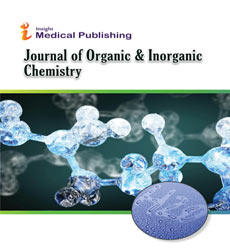Synergistic Zn-Co Nanointerfaces on Graphene: Bridging Structure and Catalytic Function
Asahi Fuji
Department of Chemistry and Applied Biology, Gifu University, Gifu, Japan
Published Date: 2024-12-12DOI10.36648/2472-1123.10.4.102
Asahi Fuji*
1Department of Chemistry and Applied Biology, Gifu University, Gifu, Japan
- *Corresponding Author:
- Asahi Fuji,
Department of Chemistry and Applied Biology, Gifu University, Gifu, Japan
E-mail: fujiasahi@gi.jp
Received date: November 12, 2024, Manuscript No. IPJOIC-24-20052; Editor assigned date: November 14, 2024, PreQC No. IPJOIC-24-20052 (PQ); Reviewed date: November 28, 2024, QC No. IPJOIC-24-20052; Revised date: December 05, 2024, Manuscript No. IPJOIC-24-20052 (R); Published date: December 12, 2024, DOI: 10.36648/2472-1123.10.4.102
Citation: Fuji A (2024) Synergistic Zn-Co Nano Interfaces on Graphene: Bridging Structure and Catalytic Function. J Org Inorg Chem Vol.10 No.4: 102.
Description
Solid catalysts are fundamental to chemical industries, playing a pivotal role in accelerating reaction rates, enhancing selectivity and optimizing yields. Their importance spans a wide range of applications, from petrochemical processing to environmental remediation and pharmaceuticals. Research in this area focuses on developing catalysts that are not only highly active and selective but also exhibit long-term stability under demanding operational conditions.
One of the critical factors in catalytic efficiency is the synergistic interaction between the various components in a catalytic system. These interactions can significantly influence the reaction pathway, promoting higher reaction rates and the selective production of target compounds. Achieving this synergy often relies on the precise engineering of nano interfaces among active components, supports and promoters. These interfaces facilitate efficient electron and energy transfer, which are vital for catalytic performance.
Despite advancements, establishing well-defined nano interfaces remains a significant challenge, particularly with conventional industrial methods such as precipitation, impregnation and co-precipitation. These techniques often result in uneven dispersion of active sites, inadequate interaction between components and limited control over catalyst morphology. Such limitations can reduce the overall efficiency and lifespan of catalysts.
Innovative approaches, including advanced synthesis techniques like atomic layer deposition, solvothermal methods and template-assisted strategies, are being explored to overcome these challenges. By improving control over the composition and structure of solid catalysts, researchers aim to unlock their full potential, paving the way for more sustainable and efficient industrial processes.
Challenges in traditional catalyst preparation
Among the conventional techniques, impregnation methods are widely used for fabricating supported catalysts. These methods involve either impregnating a mixed precursor solution onto a support or performing sequential impregnation of individual precursors. The subsequent drying and calcination steps convert the precursors into active metal oxide phases. However, these processes often lead to complications, such as the formation of complex metal oxide alloys that are difficult to reduce or the generation of isolated particles rather than bimetallic interfaces. Factors such as the support's surface properties, hydrophilicity and isoelectric point significantly influence the size, distribution and interaction of the active components.
Advances in colloidal chemistry for catalyst design
In recent decades, advances in colloidal chemistry have enabled the synthesis of nanocrystals with precise control over size, shape and composition. This approach has facilitated the development of hybrid nanocrystals comprising two or more subunits with well-defined configurations and interfacial characteristics. The compatibility of lattice structures between subunits plays a critical role in guiding the synthesis, as lattice mismatch can affect the stability and morphology of the resulting nanostructures. This methodology has been extended to supported catalysts, where the support acts as a seed for controlled nucleation and growth, allowing for the systematic design of nano interfaces with enhanced catalytic properties.
Zn-Co nano interfaces on graphene support
Building on these advancements, the present study introduces a novel strategy for designing Zn-Co nano interfaces on a graphene support. By leveraging the ultra-small lattice mismatch (0.18%) between ZnO and CoO, the study demonstrates the ability to guide the selective growth of CoO on ZnO particles and vice versa. Using ZnO/GN as a heteroseed, CoO particles preferentially nucleate and grow on ZnO, adhering to the Frankvan der Merwe (FM) mechanism. Similarly, ZnO displays a propensity to grow on CoO particles rather than on other regions of the graphene support. Alternating the growth of CoO and ZnO facilitates the construction of intricate multivariate structures with densely packed nano interfaces.
Catalytic performance and future directions
The Zn-Co nano interfaced catalysts developed through this approach exhibit remarkable catalytic performance, attributed to the high density of active interface sites. This innovative methodology opens new avenues for designing supported catalysts with multiple functional components, optimizing their activity, stability and selectivity. Future research could explore the application of this strategy to other material systems, enabling broader advancements in catalysis and related fields.
Open Access Journals
- Aquaculture & Veterinary Science
- Chemistry & Chemical Sciences
- Clinical Sciences
- Engineering
- General Science
- Genetics & Molecular Biology
- Health Care & Nursing
- Immunology & Microbiology
- Materials Science
- Mathematics & Physics
- Medical Sciences
- Neurology & Psychiatry
- Oncology & Cancer Science
- Pharmaceutical Sciences
